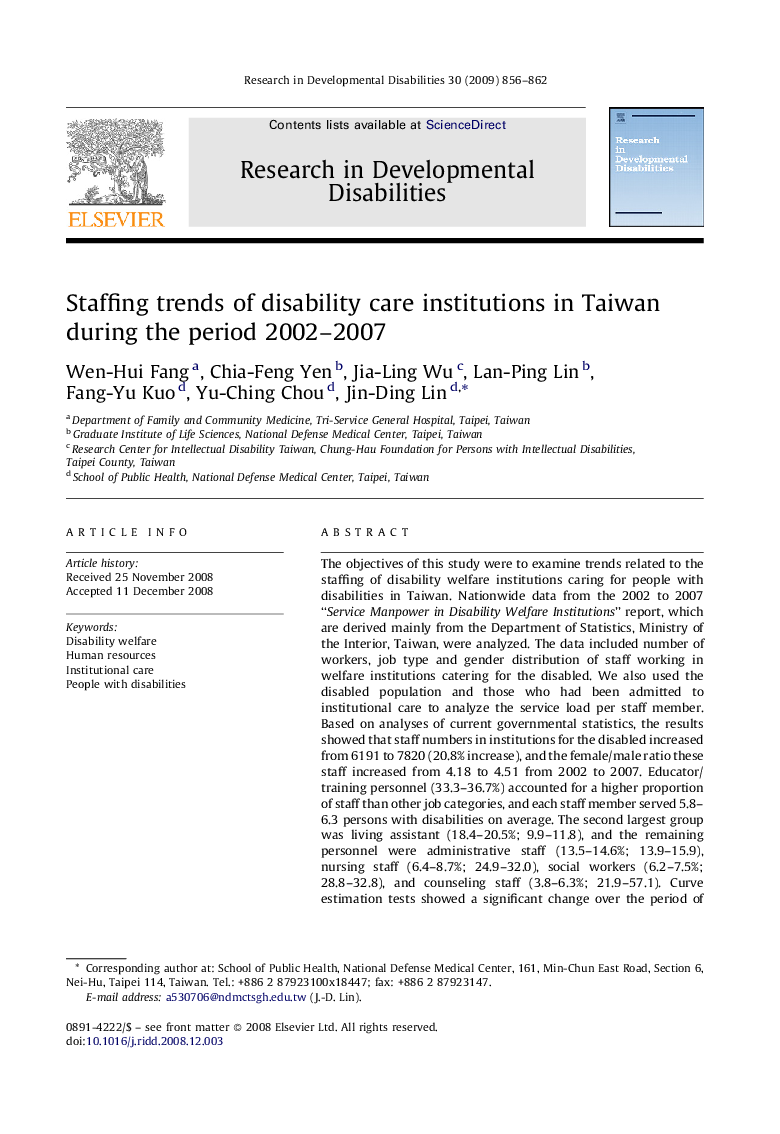| Article ID | Journal | Published Year | Pages | File Type |
|---|---|---|---|---|
| 372264 | Research in Developmental Disabilities | 2009 | 7 Pages |
The objectives of this study were to examine trends related to the staffing of disability welfare institutions caring for people with disabilities in Taiwan. Nationwide data from the 2002 to 2007 “Service Manpower in Disability Welfare Institutions” report, which are derived mainly from the Department of Statistics, Ministry of the Interior, Taiwan, were analyzed. The data included number of workers, job type and gender distribution of staff working in welfare institutions catering for the disabled. We also used the disabled population and those who had been admitted to institutional care to analyze the service load per staff member. Based on analyses of current governmental statistics, the results showed that staff numbers in institutions for the disabled increased from 6191 to 7820 (20.8% increase), and the female/male ratio these staff increased from 4.18 to 4.51 from 2002 to 2007. Educator/training personnel (33.3–36.7%) accounted for a higher proportion of staff than other job categories, and each staff member served 5.8–6.3 persons with disabilities on average. The second largest group was living assistant (18.4–20.5%; 9.9–11.8), and the remaining personnel were administrative staff (13.5–14.6%; 13.9–15.9), nursing staff (6.4–8.7%; 24.9–32.0), social workers (6.2–7.5%; 28.8–32.8), and counseling staff (3.8–6.3%; 21.9–57.1). Curve estimation tests showed a significant change over the period of the study in the number of disabled people attended to on average by administrative staff, social workers, nurses and other staff. The results highlight the requirement for further study to explore the needs of the majority service provider – female staff – to provide them with adequate professional or psychological support to enable them to work with people with disabilities in institutions. In addition, further analysis should focus on a review of staff numbers for different types of institutions, to examine their adequacy.
